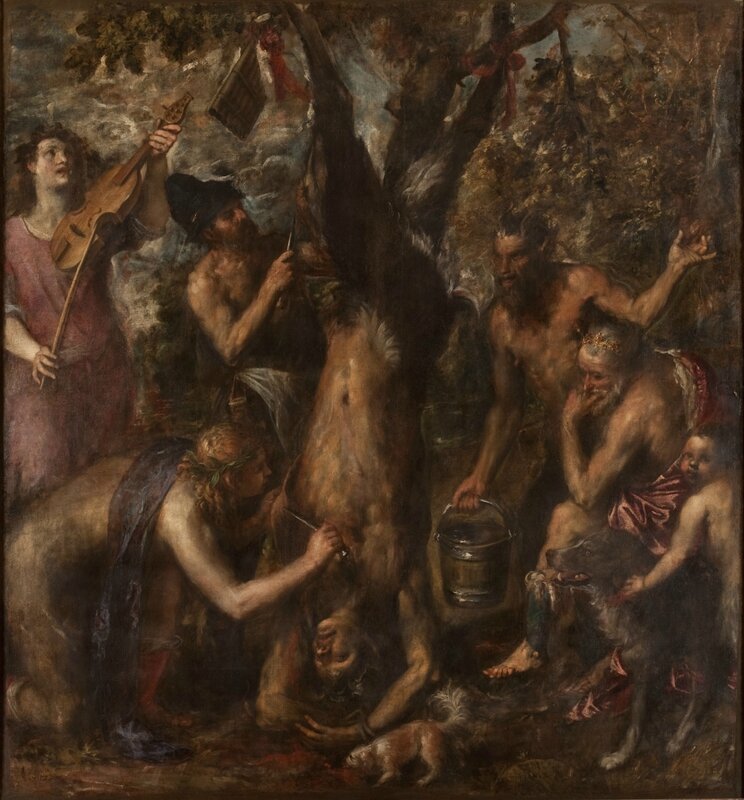Titian, The Flaying of Marsyas, probably 1570s
Titian (Tiziano Vecellio) (Italian, Pieve di Cadore ca. 1485/90?–1576 Venice), The Flaying of Marsyas, probably 1570s. Oil on canvas, 86 5/8 × 80 5/16 in. (220 × 204 cm). Kroměříž, Archidiocese Olomouc, Archiepiscopal Palace, Picture Gallery © Archdiocesan Museum Kroměříž
We do not know for whom Titian’s late masterpiece was painted, whether it was completed to the artist’s satisfaction (although it is signed), or whether it was altered following his death. It depicts Ovid’s tragic story of the satyr Marsyas, who lost a musical contest with the god Apollo and was punished with an awful death. Scholars have debated the painting’s meaning, but all agree that its impact largely rests in the distinction between broadly painted areas that come into focus only from a distance and those with more finish and detail. The elderly Titian used this technique to portray a number of tragic scenes. The surface brings to mind the words of the seventeenth-century art critic Marco Boschini: "For the final touches he would blend the transitions from highlights to halftones with his fingers. . . . Or with a dab of red, like a drop of blood, he would enliven some surface—in this way bringing his animated figures to completion."
This work is exhibited in the “Unfinished: Thoughts Left Invisible” exhibition, on view through September 4th, 2016. #MetBreuer

/https%3A%2F%2Fprofilepics.canalblog.com%2Fprofilepics%2F1%2F0%2F100183.jpg)
/https%3A%2F%2Fstorage.canalblog.com%2F03%2F02%2F119589%2F96711876_o.jpg)
/https%3A%2F%2Fstorage.canalblog.com%2F11%2F31%2F119589%2F94773502_o.jpg)
/https%3A%2F%2Fstorage.canalblog.com%2F20%2F83%2F119589%2F94772815_o.jpg)
/https%3A%2F%2Fstorage.canalblog.com%2F26%2F72%2F119589%2F75604929_o.jpg)
/https%3A%2F%2Fstorage.canalblog.com%2F59%2F60%2F119589%2F26458628_o.jpg)



/image%2F1371349%2F20240412%2Fob_258f9b_ash-ashm-wa2008-89-001.jpg)
/image%2F1371349%2F20240412%2Fob_d5ebdf_10105187116-db17b2f5ff-b.jpg)
/image%2F1371349%2F20240412%2Fob_efd409_dp811857.jpg)
/http%3A%2F%2Fstorage.canalblog.com%2F04%2F81%2F119589%2F128791640_o.jpg)